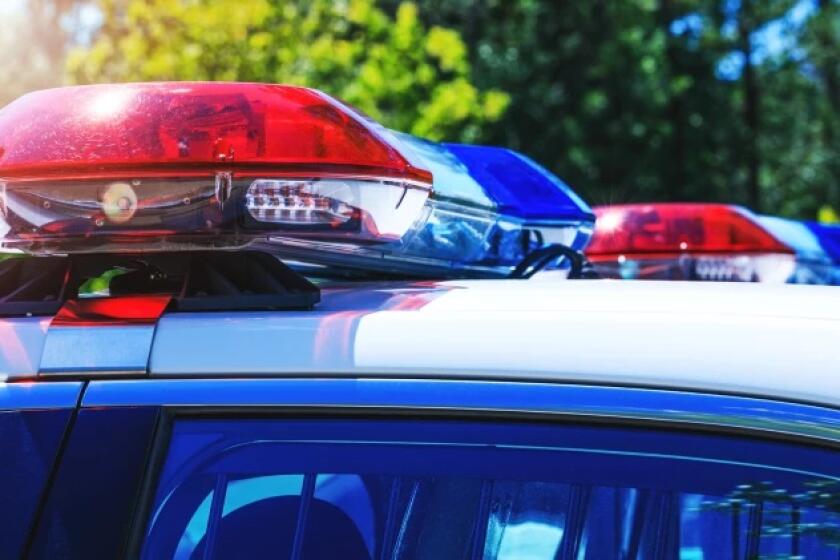Messianic Ads Anger Some Valley Jews
- Share via
WOODLAND HILLS — For Jews, the High Holy Days of Rosh Hashana and Yom Kippur are a time of quiet introspection and warm fellowship with family and friends.
Some synagogues choose to advertise their services through newspaper ads, and a few have applied to the city to hang street banners from light poles.
But some Jews in the San Fernando Valley say 24 banners fluttering in the breeze that include the phrases, “Yes, there are Jews who believe in Jesus” and “Jesus is the Messiah!” are offensive.
The banners’ sponsor, Adat Y’shua Ha Adon Messianic Jewish Congregation of Woodland Hills, says it has followed the proper city application and fee process.
The congregation, which believes in Jesus as the Messiah, said it has used street banners for three years, borrowing the idea from other congregations that advertise their High Holy Day services.
“If it’s offensive, we certainly regret that,” said the Rev. Michael Brown of Adat Y’shua, who calls himself a Messianic pastor. “We are not intending to be offensive. We are merely stating what kind of congregation we are. And we would hope that our fellow Jewish people would be tolerant even if they disagree.”
After receiving several complaints this week, Councilman Hal Bernson said he does not think the banners are appropriate, given the many Jewish constituents in his district.
“I think it is an affront to the Jewish community,” he said. “Especially during the High Holy Days to have these type of banners, I thought it was poor judgment on street use to approve these things.”
Part of the brouhaha may stem from an erroneous report that the banners were sponsored by the organization Jews for Jesus.
“Sometimes people confuse us with the organization,” Brown said. “We have friendly relations, but we are totally separate.”
This is not the first flap over the use of city street poles for banners.
In August, the council fretted over banners bought by the ABC television network to promote its fall lineup. The banners were already installed on city street poles when council members learned that municipal policy requires banners be used for community, charitable, city or nonprofit purposes, not commercial use.
At that point, a 30-day moratorium was slapped on all future banner requests, and the council asked for a review of current laws and ways to eliminate commercial street-banner displays.
That report is scheduled for council review Tuesday.
Currently, organizations pay $46 to hang one banner for 60 days.
The city has allowed religious banners to hang if they promote an event open to the entire community, said Ted Rogers, a city legislative analyst.
He recalled only one religious group banner that was denied: A Jewish temple promoting a religious service that had an entrance fee. The fee led the city attorney to nix the banner, he recalled.
“If a temple that believes in Jesus wishes to have a banner up to announce a community or nonprofit or charitable event, they can do so,” said Chris Westhoff, the assistant city attorney who oversees street banner issues.
*
The 1st Amendment, Westhoff said, protects groups as diverse as the Ku Klux Klan and the Catholic Church. But a banner on city poles should advertise an event, and not a religious message.
“Trying to couch messages as events won’t be allowed,” he said firmly.
That requirement, city officials admit, might get sticky in a case like the Adat Y’shua Ha Adon banners.
Brown said he wanted to make sure that Reform, Conservative and Orthodox Jews understand his congregation’s free services include references to Jesus as the Messiah. So his banners have a Star of David, as well as references to Jesus.
“We don’t want to deceive or mislead anyone,” he said. “So we want it clear that people know what kind of congregation we are.”
Westhoff, the arbiter of such tough calls, said the congregation’s desire to disclose its belief in Jesus might be a legitimate reason to reexamine the event-only rule.
Brown said his congregation has received comments both positive and negative about the two dozen blue-and-white banners in Woodland Hills, Encino, Northridge, Sherman Oaks and other parts of the Valley.
They have been up for nearly two months, he said, and will come down soon with the end of the High Holy Days next week.
A deputy for Bernson said the councilman’s office now wants to see the art in advance for any banners that will be hung in his district.
But Brown said he is confident about his congregation’s right to display future banners.
“It’s a 1st Amendment right,” he said. “If another congregation is allowed to advertise the High Holy Days services, we should have the same right.”
More to Read
Sign up for Essential California
The most important California stories and recommendations in your inbox every morning.
You may occasionally receive promotional content from the Los Angeles Times.













